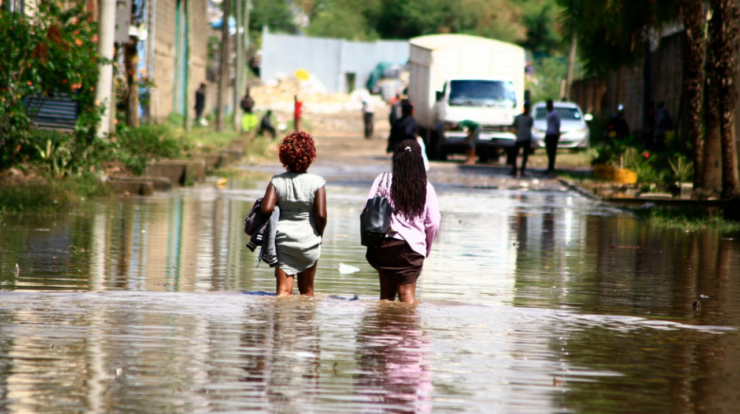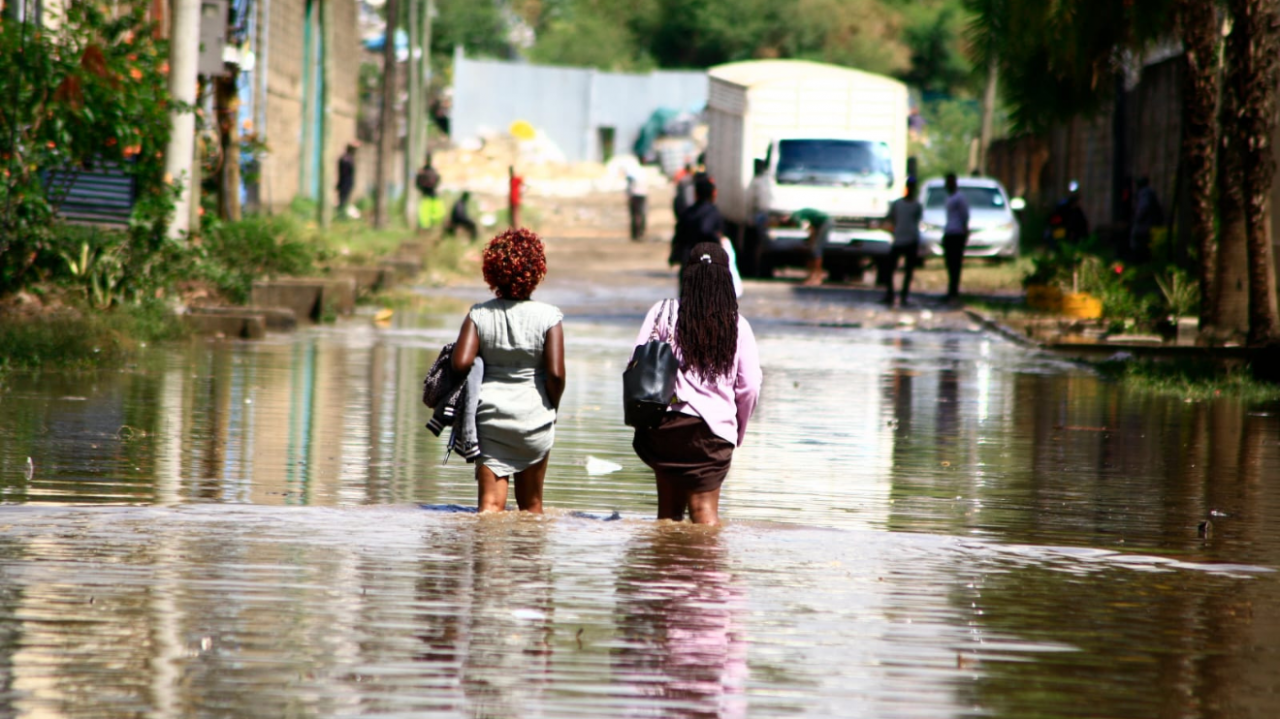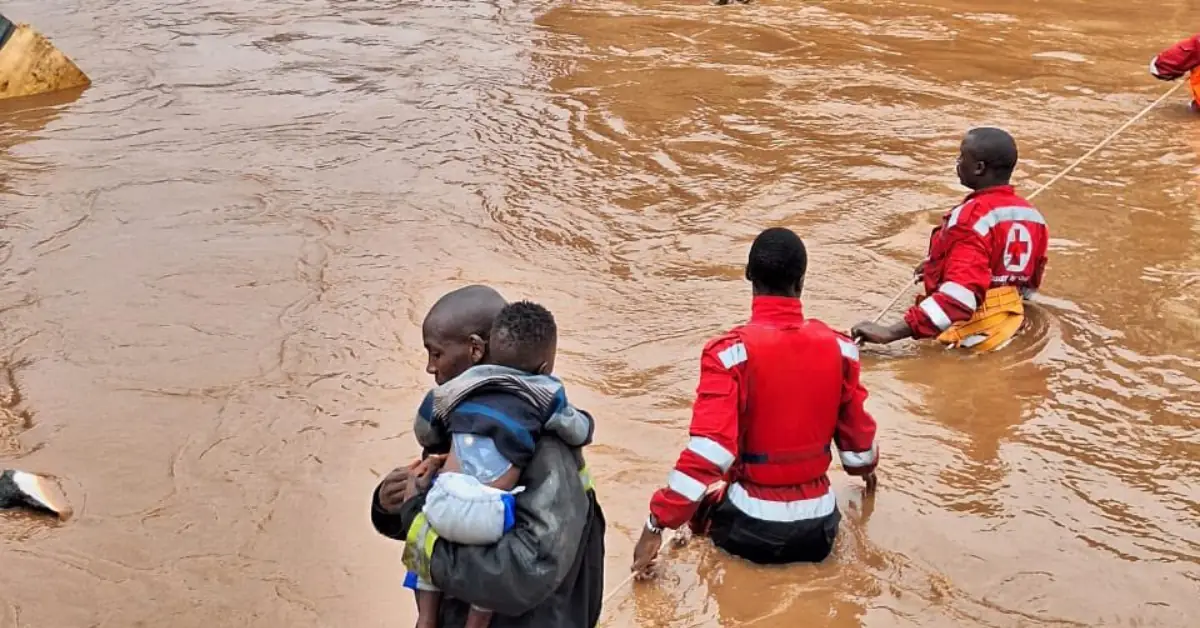
Kenya nairobi flooding – Kenya’s capital city, Nairobi, has been battling relentless floods, exposing the vulnerabilities of urban infrastructure and the challenges of managing water resources in rapidly growing cities. This article delves into the causes, impacts, and strategies for mitigating flooding in Nairobi, highlighting the urgent need for sustainable solutions.
Flooding has become an all too familiar sight in Nairobi, with heavy rainfall overwhelming drainage systems and causing widespread damage. The city’s unique geographical features, coupled with rapid urbanization and inadequate infrastructure, have exacerbated the problem, leading to devastating consequences for residents and businesses alike.
Causes of Flooding in Nairobi: Kenya Nairobi Flooding

Flooding in Nairobi is a recurring problem that has caused significant damage and disruption to the city and its residents. The causes of flooding in Nairobi are complex and multifaceted, but can be broadly categorized into two main factors: geographical and human-induced.
Geographical Factors
- Low-lying topography:Nairobi is situated in a valley surrounded by hills, which makes it prone to flooding during heavy rainfall.
- Impervious surfaces:The rapid urbanization of Nairobi has led to an increase in impervious surfaces, such as roads, buildings, and parking lots, which reduce the amount of water that can be absorbed into the ground and increase runoff.
- Inadequate drainage systems:Nairobi’s drainage systems are often overwhelmed by heavy rainfall, leading to flooding in low-lying areas.
Human-Induced Factors
- Deforestation:The clearing of forests around Nairobi has reduced the amount of vegetation that can absorb rainwater, increasing runoff and the risk of flooding.
- Poor waste management:Improper disposal of solid waste can block drainage systems, exacerbating flooding.
- Construction in floodplains:The construction of buildings and other structures in floodplains increases the risk of flooding by reducing the area available for water to flow.
Areas Prone to Flooding
Some of the areas in Nairobi that are particularly prone to flooding include:
- Kibera:Kibera is a densely populated slum located in a low-lying area near the Nairobi River. The area is prone to flooding during heavy rainfall, which can damage homes and displace residents.
- Mathare:Mathare is another densely populated slum located in a low-lying area. The area is prone to flooding from the Nairobi River and from runoff from the surrounding hills.
- Huruma:Huruma is a residential area located in a low-lying area near the Nairobi River. The area is prone to flooding during heavy rainfall, which can damage homes and infrastructure.
Impacts of Flooding on Nairobi’s Infrastructure
Flooding in Nairobi can have a significant impact on the city’s infrastructure. Roads, bridges, and buildings can be damaged or destroyed, disrupting transportation and access to essential services. Businesses can also be damaged or forced to close, leading to economic losses.
Damage to Roads and Bridges
Flooding can damage roads and bridges by washing away pavement, undermining foundations, and causing structural damage. This can lead to road closures and traffic congestion, which can disrupt transportation and access to essential services.
Damage to Buildings
Flooding can also damage buildings by flooding basements, damaging electrical systems, and causing structural damage. This can lead to the displacement of residents and businesses, as well as economic losses.
Economic Losses, Kenya nairobi flooding
Flooding can also lead to economic losses for businesses and individuals. Businesses may be forced to close or lose inventory due to flooding, while individuals may lose their homes or belongings. Flooding can also disrupt supply chains and lead to increased prices for goods and services.
Case Studies
Some notable examples of flooding events that have had a significant impact on Nairobi’s infrastructure include:
- 2018 floods:The 2018 floods were the worst in Nairobi’s history, causing widespread damage to roads, bridges, and buildings. The floods also displaced thousands of people and caused an estimated $1 billion in economic losses.
- 2019 floods:The 2019 floods were also severe, causing damage to roads, bridges, and buildings. The floods also displaced thousands of people and caused significant economic losses.
Social and Economic Consequences of Flooding

Flooding in Nairobi can have a significant impact on the social and economic well-being of the city’s residents. Flooding can lead to health risks, displacement, and economic losses.
Health Risks
Flooding can lead to a number of health risks, including:
- Waterborne diseases:Flooding can contaminate water sources, leading to the spread of waterborne diseases such as cholera, typhoid, and dysentery.
- Respiratory problems:Flooding can also lead to respiratory problems, such as asthma and pneumonia, due to the presence of mold and other allergens in floodwaters.
- Skin infections:Flooding can also cause skin infections, such as rashes and cellulitis, due to exposure to contaminated water.
Displacement
Flooding can also lead to displacement, as homes and businesses are damaged or destroyed. Displacement can have a significant impact on people’s lives, as they may lose their homes, belongings, and livelihoods.
Economic Losses, Kenya nairobi flooding
Flooding can also lead to economic losses, as businesses are forced to close or lose inventory, and individuals lose their homes or belongings. Flooding can also disrupt supply chains and lead to increased prices for goods and services.
Data on Flooding Impacts
According to a study by the World Bank, flooding in Nairobi affects an estimated 1.5 million people each year. The study also found that flooding causes an estimated $100 million in economic losses each year.
Last Point
Addressing the flooding crisis in Nairobi requires a multifaceted approach involving infrastructure improvements, urban planning, and community engagement. By investing in sustainable flood management practices, investing in resilient infrastructure, and fostering collaboration among stakeholders, Nairobi can mitigate the impacts of flooding and create a more resilient and livable city for its residents.
Commonly Asked Questions
What are the primary causes of flooding in Nairobi?
Nairobi’s flooding is primarily attributed to a combination of geographical factors, including its location in a valley and the presence of rivers and streams that often overflow during heavy rainfall. Rapid urbanization and inadequate drainage infrastructure have further exacerbated the problem.
How has flooding impacted Nairobi’s infrastructure?
Flooding has caused significant damage to roads, bridges, and buildings in Nairobi, disrupting transportation and economic activities. Businesses have suffered losses due to property damage and disruption of operations.
What are the social and economic consequences of flooding in Nairobi?
Flooding poses health risks to residents, including waterborne diseases and respiratory problems. It also displaces people from their homes, disrupts access to essential services, and affects livelihoods.
What measures are being taken to mitigate flooding in Nairobi?
The government and other stakeholders are implementing measures such as improving drainage systems, constructing flood retention basins, and promoting sustainable urban planning practices to reduce the impacts of flooding.
How can the public contribute to reducing flooding risks?
Residents can help reduce flooding risks by avoiding littering, which can clog drainage systems, and by supporting initiatives to improve water management and infrastructure.





